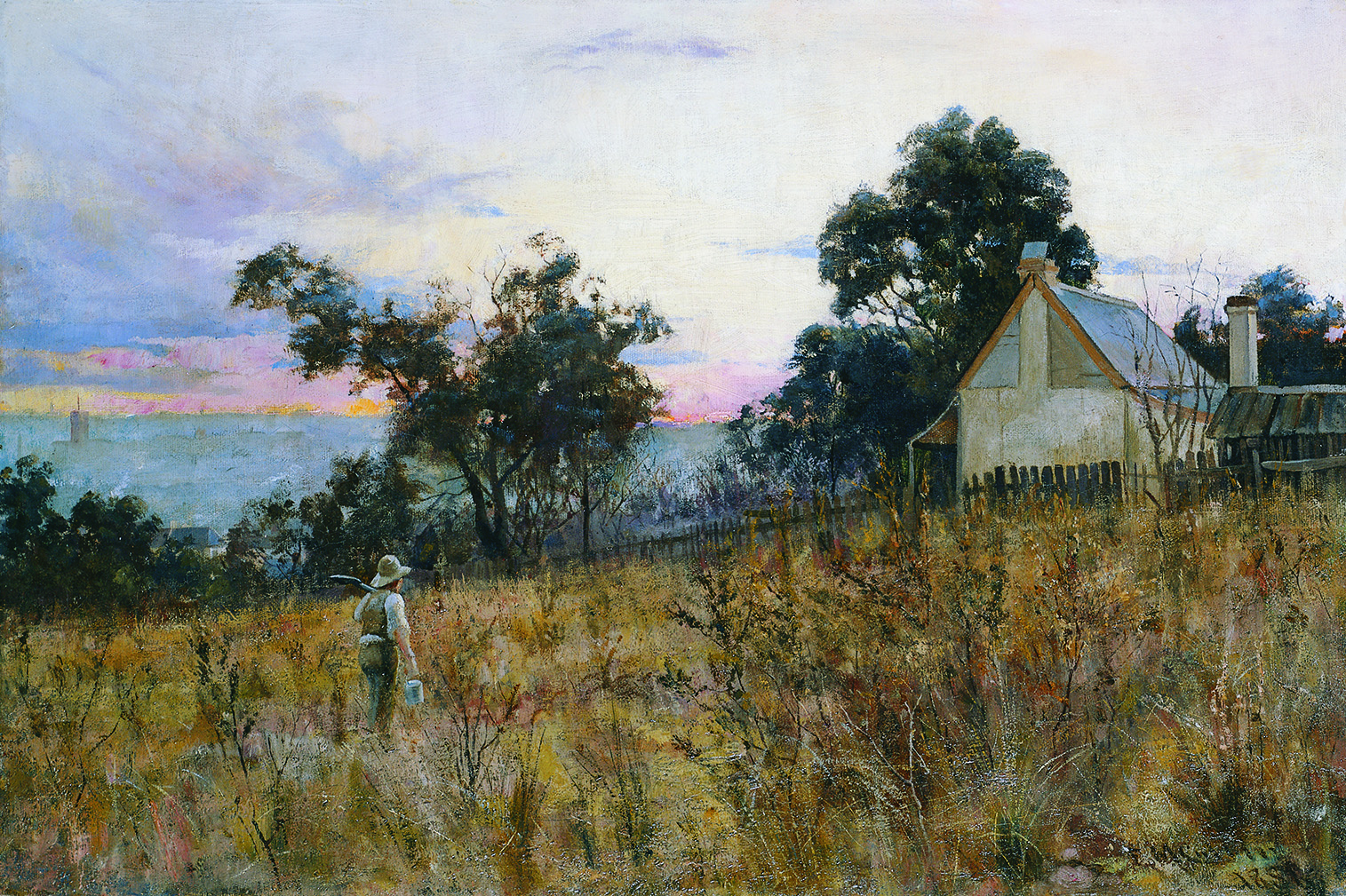Barclay on McCubbin
In a personal and erudite reflection, local writer Jill Barclay shares her thoughts on a favourite in the collection by Frederick McCubbin (1855–1917), Heath Paddock, Hawthorn, 1886.

Barclay on McCubbin
The first thing I do when visiting CAM is to call on an old friend, a small oil painting titled Heath Paddock, Hawthorn, by Frederick McCubbin. I don’t much care who painted it, and that the artist was one of Australia’s most important, because its effect on me is as it has always been. I first stood before the painting, then titled Winter Evening, Hawthorn, at least forty years ago.
In the painting, weakening light drifts across the landscape and the scent of the earth lifts as warm ground meets cooling air. The sun has dropped away, and the horizon is rose-coloured. A solitary figure turns his back on the working day and trudges toward home to rest, an implement slung over his shoulder. Clearly this is not a winter scene—as in the old title—the figure, a youngish man, doesn’t appear to be cold, shirtsleeves aren’t for chilly evenings. Autumn is more likely.
The painting has belonged to CAM’s collection since 1926 when JT Tweddle (-1943)—businessman, art collector and philanthropist—made a gift of the work. Heath Paddock was painted in 1886.
Frederick McCubbin was one of the leaders of the art movement known as the Heidelberg School. This group of artists, which also included Tom Roberts, Arthur Streeton and Walter Withers, is also known as the Australian Impressionists. Like the French Impressionists, much of the Heidelberg School work was created outdoors, or en plein air, and with the intention of portraying the character of Australian life. The Australian Impressionists experimented with painting techniques to accurately describe the unique light and atmosphere of the bush.
While McCubbin could be described as a sentimentalist, his paintings were expertly done. This painting—Heath Paddock—in Castlemaine’s art gallery uses romantic notions to grasp our attention but sparingly; the “story” doesn’t require large romantic gestures or elaborate scenes of wistful longing. A simple image, it combines the European ideal of the “pioneer” transforming the untamed land by hand (though we now know that this “ideal” was misguided and destructive), and the use of new-found painting techniques that were suited to describing the Australian landscape. Heath Paddock is by one of Australia’s most significant artists, the picture is a gem, and we are fortunate to have it in Castlemaine Art Museum’s collection.
Jill Barclay
July 2020